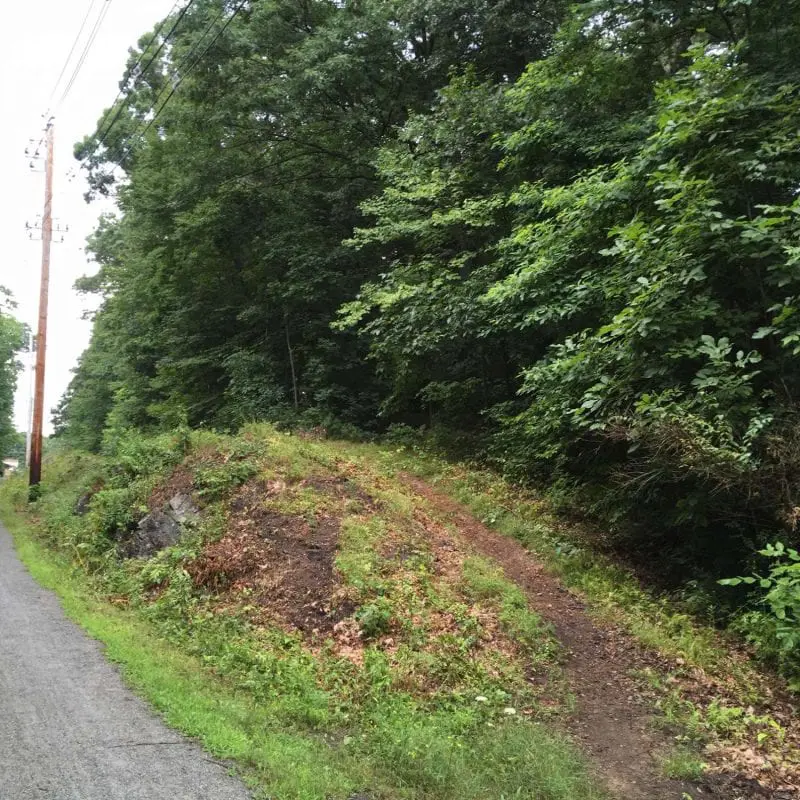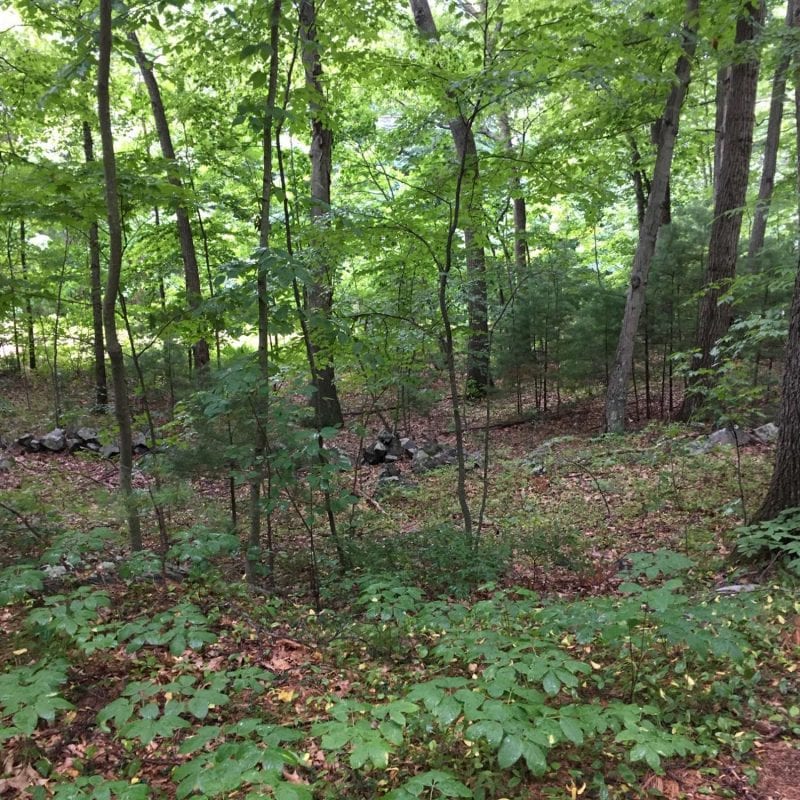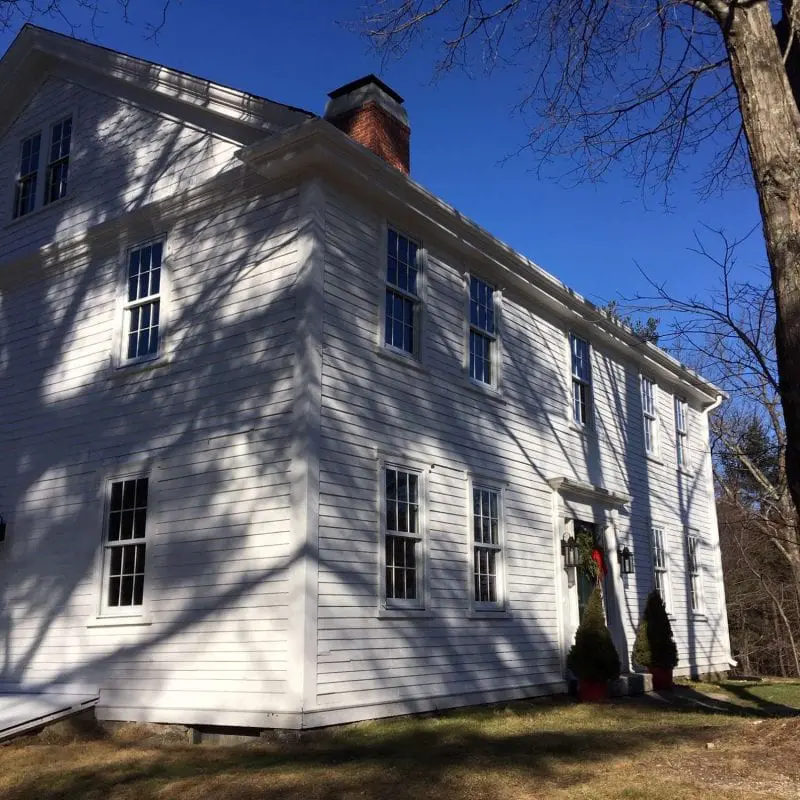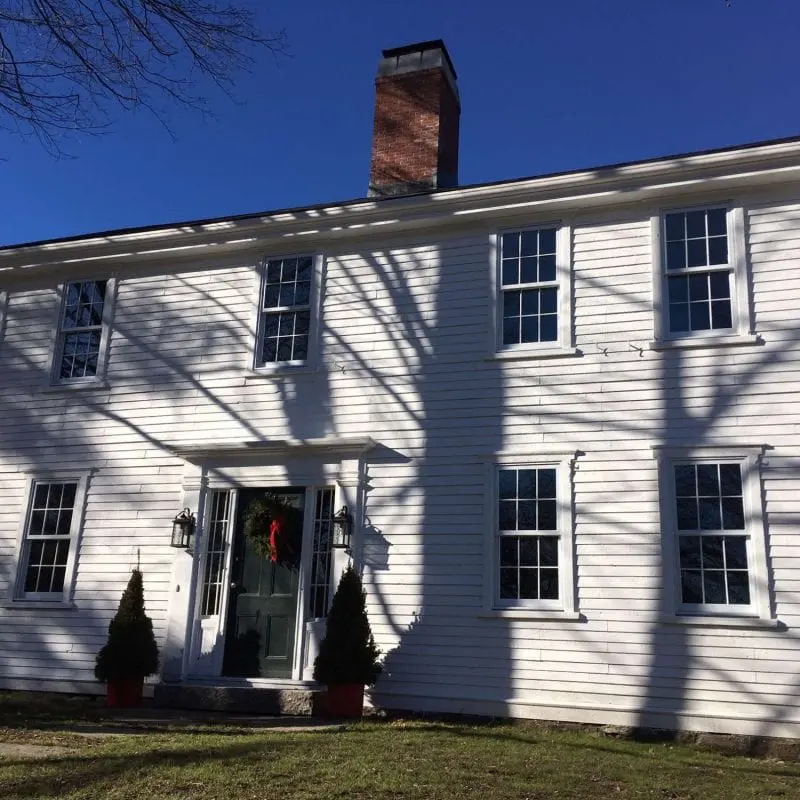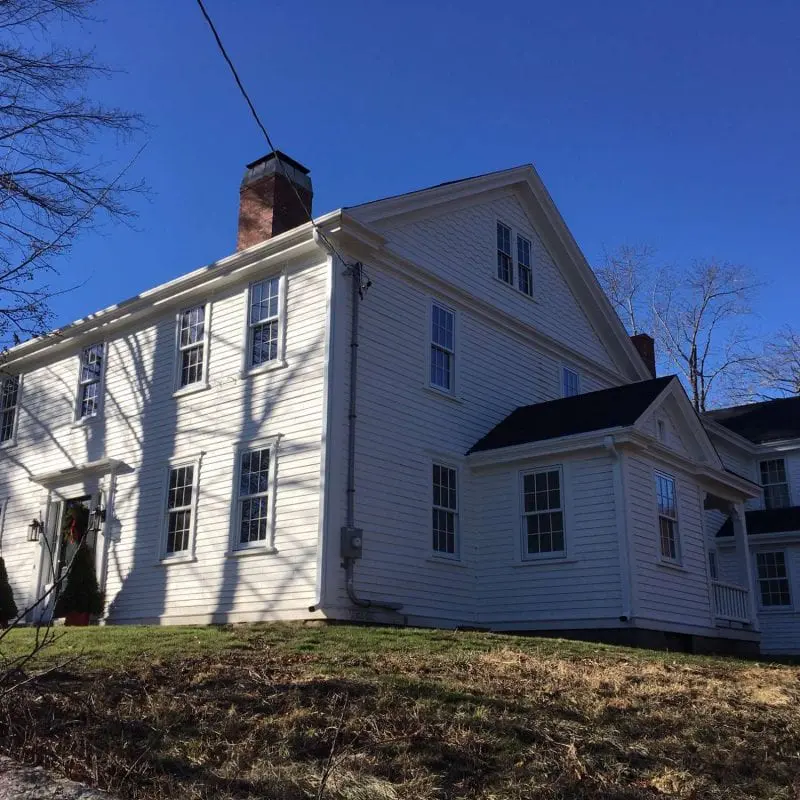Sarah Cloyce was one of three sisters from the Towne family who was accused of witchcraft in 1692. She was the only one to escape the hangman’s noose – her sisters Rebecca Nurse and Mary Easty were both executed.
More About Sarah and Peter Cloyce Home, Site of
Rebecca Nurse’s sister Sarah, and her second husband Peter Cloyce (alternate spellings Cloyes, Clayce, Clayes) lived near the Frost Fish River, on the eastern side of Salem Village. They were neighbors of Rebecca and George Jacobs Jr., and Sarah and Daniel Andrews. Paul Boyer and Stephen Nissenbaum explain in their 1974 book Salem Possessed: The Social Origins of Witchcraft, that Jacobs Jr. and Cloyce were tenants of the wealthier Andrews. All three families would suffer witchcraft accusations in 1692.
As one of the daughters of Joanna Towne of Topsfield, who had herself been accused of witchcraft twenty years earlier, Sarah Cloyce and her two sisters Rebecca Nurse and Mary Easty (alternate spellings Esty, Eastey) were prime candidates to be accused of witchcraft in 1692. It was believed that witches were often members of the same family, especially if they were women.
In mid-March, the beloved, respected, and elderly Rebecca Nurse was accused of witchcraft. On March 27, while attending the first Sunday meeting since her sister Rebecca had been jailed, Sarah stood and left the meetinghouse after Reverend Parris described what his topic for the day would be. In a clear reference to Nurse, Parris planned to talk about the devil’s very existence within the church. Cloyce slammed the door behind her. Soon the accusers turned their attention to her.
On March 31, Abigail Williams claimed 40 witches mocked the Lord’s Supper by holding their own ceremony at the village parsonage. According to Williams, Sarah Cloyce and Sarah Good were the deacons who served the sacrament of blood and red flesh.
A complaint was filed on April 4 by Jonathan Walcott and Nathaniel Ingersoll against Cloyce and John Proctor’s wife Elizabeth. Cloyce’s specter was said to have tormented the Parris slave John Indian and the Putnam servant Mercy Lewis on the next day, a Sabbath. A week later, on April 11, arrest warrants were issued for Cloyce and Proctor. At their examination at the Salem Town meetinghouse, the afflicted claimed to be tormented, saying they were choked, bitten, pinched, and encouraged to sign the devil’s book. When Sarah fainted during her examination, the accusers said, “Her spirit is gone to prison to her sister Nurse.” Later that day, both women and Proctor’s husband John were held for trial in Salem jail.
Cloyce would eventually be transported to Boston jail and then Ipswich jail where she awaited her trial. By the third week of April, her sister Mary Easty was also arrested for witchcraft. Rebecca Nurse was hanged on July 19. Mary Easty was hanged on September 22, the last day of executions.
Governor William Phips dissolved the Court of Oyer and Terminer in October. Those still remaining in jail would have their cases heard starting in January of 1693 by a newly-convened Supreme Court. About half of the prisoners had their cases dismissed, and could leave jail if their family members were able to pay their outstanding fees, which included weekly room and board, blankets, and shackles. According to Emerson Baker in his book A Storm of Witchcraft: The Salem Trials and the American Experience, “In January 1693 the grand jury for the Superior Court of Judicature failed to produce a true bill of indictment against Sarah Cloyce. She was released after almost nine months in prison.”
After the trials came to an end, and the jails emptied, many people who had suffered through the terrible events decided to move away from Salem. Sarah and Peter Cloyce moved first to Boston and then to what is today Framingham, MA. The land where they and other “refugees” from the Salem witchcraft hysteria settled was given to them by former Deputy Governor Thomas Danforth, an area known as “Danforth’s Farms.” Some suspect he was trying to make up for his part in the witchcraft trials. Peter Cloyce signed the 1700 charter that incorporated Framingham, and was on the town’s first board of selectmen.
Some families involved with the events of 1692 changed the spelling of their names in the eighteenth century (Nurse became Nourse, Corwin became Curwen, Hathorne became Hawthorne). The reasons for the changes are not clear. It has been suggested that it was simply a time period when people formalized the spelling of their last names. At some point, Cloyce became Clayes.
The Framingham street on which Sarah and Peter established their farm is today known as Salem End Road. The house that stands on the property today, beautifully renovated, is known as the Clayes House. It was built circa 1776, and is under a preservation restriction from Historic New England, to protect some of its interior and exterior historic features. This is a private residence and is not open to the public. (657 Salem End Road, Framingham, MA)
Sarah Towne was the youngest of the Towne daughters, born in Salem, MA in 1637 after the family had arrived from England. According to the records she was baptized in Salem in 1648. The Towne family moved to Topsfield by the late 1650s and lived on thirty-eight acres north of the Ipswich River. Sarah married Edmund Bridges, possibly Topsfield’s first blacksmith, in 1659/60. The couple, who had at least six children, initially lived near the Towne homestead, but soon moved to Salem Village near the Topsfield line. When Edmund Bridges died (circa 1681), Sarah moved back to Topsfield, but, according to historian George Francis Dow, she and her children were warned out of town on September 12, 1682, likely due to lack of financial support. Shortly thereafter, she married for a second time, to Peter Cloyce of Salem Village. They had at least one daughter, named Hepzibah. In 1692, Sarah Cloyce was accused of witchcraft, examined, and jailed. She was released in January of 1693 after nine months in prison when no true bill of indictment was produced. She died in Framingham in 1703 at the age of 66.
Additional note: The 1985 movie Three Sovereigns for Sarah, filmed on location in various Massachusetts towns, including Danvers, Saugus, Salem, Topsfield, and Ipswich, starred Vanessa Redgrave in the role of Sarah Cloyce. Except for the premise of the title – three sovereigns were not paid as reparations to the family – the movie is one of the most historically-accurate on the subject of the Salem witch trials.
Additional note: A tangential connection to the town where the Cloyce-Clayes family resettled after the trials were over, was the Framingham-based Dennison Manufacturing Company, one of two American firms that cornered the market on Halloween decorations from 1909 to the 1940s. In addition to decorations, they were known for their annual “Bogie Books,” which were filled with tips about hosting Halloween parties for adults.
More information on the Dennison Manufacturing Company can be found in this fascinating article from the New England Historical Society: www.newenglandhistoricalsociety.com/halloween-ephemera-factory-empire-built-orange-crepe-paper/
What would Sarah and Peter Cloyce think of the image of witches used to celebrate Halloween in the twentieth century?!
The site of the Cloyce’s home in 1692 is behind Danvers High School, off the Danvers rail trail.


